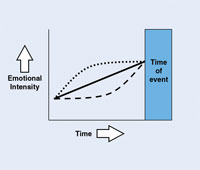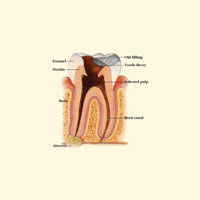The ADA coding system undergoes updating and revision periodically. Up until 2000, updates were scheduled every 5 years; revisions now are scheduled every 2 years. The Code is revised under the direction of the ADA Council on Dental Benefit Programs, with changes and updates made as a cooperative effort of the dental profession and the dental insurance industry. The Code Revision Committee (CRC) currently comprises 6 industry representatives: one each from America’s Health Insurance Plans, Blue Cross Blue Shield, the Centers for Medicare and Medicaid Services (CMS), Delta Dental Plans Association, National Association of Dental Plans, and a national purchaser of dental benefits. Six dentists from the ADA Council on Dental Benefits make up the rest of the CRC. Suggestions for changes in the Code may also be made by members of the dental community at the ADA.org Web site. Details as to how to submit changes are available there.
The Current Dental Terminology [CDT] 2007-2008 for dentistry consists of 581 treatment codes. This compares to thousands of diagnosis codes for medical claims in the International Statistical Classification of Diseases and Related Health Problems (ICD-9), plus thousands more treatment codes in the Physicians’ Current Procedural Terminology. The ICD-9 codes are free and in the public domain. Conversely, the Current Procedural Terminology (CPT) codes are copyrighted by the American Medical Association (AMA), and therefore users must pay the AMA a royalty. According to a recent report by the Wall Street Journal, the AMA receives more than $71 million annually in licensing/royalty and book fees for th CPT.
Medical claims require both a diagnosis and treatment code, unlike dental claims, which require only a treatment code. In addition, claims made through Medicare or Medicaid for supplies, materials, or services not described in the CPT must be reported using the Healthcare Common Procedure Coding System (HCPCS). While the AMA owns the CPT, the ADA owns/copyrights the CDT codes and also provides for licensing for their use. For example, anyone using the codes in a publication, such as in my Dental Insurance Coding Handbook guidance manual, must pay a fee to the ADA. Any speaker also pays an additional fee for using the codes in a lecture. Individual dentists are not required to pay any fee for using the codes on claim forms, while software distributors and insurance companies must make their own fee arrangements with the ADA.
Dental services may be reported to dental insurance carriers using the ADA Dental Claim Form 2006 and CDT codes. It has also been recently revealed that dentists may report certain dental procedures to medical plans using CDT (dental) codes and the CMS 1500 claim form. According to the American Academy of Periodontology, since there are few medical (CPT) treatment codes available for periodontal procedures, the Centers for Medicare and Medicaid Services, under regulation 45CFR 162. 10002, recognize the HCPCS Level II (of which the ADA CDT is included) as appropriate for identifying services not described by AMA CPT codes. (Additional information concerning HCPCS codes and dental treatment may be found at the CMS Web site or through the American Academy of Periodontology.)
There are 56 changes in the Current Dental Terminology 2007-2008. These include 23 new codes, 33 revised codes, and 3 deleted items. What follows are highlights of a few of these changes as well as information on how carriers may pay toward them.
DELETIONS FOR CDT 2007-2008
D1201-Topical Application of Fluoride (Including Prophylaxis)-Child has been deleted. Use instead D1203-Topical Application of Fluoride (Prophylaxis not Included)-Child in addition to D1120-Prophylaxis-Child to report a child prophy and fluoride treatment. (There is also a new code for fluoride varnish, D1206-Topical Fluoride Varnish, which is described as being appropriate for moderate to high caries risk patients.)
D1205-Topical Application of Fluoride (Including Prophylaxis)-Adult has been deleted. Use instead D1204-Topical Application of Fluoride (Prophylaxis not Included)-Adult in addition to D1110-Prophylaxis-Adult to report an adult prophy and fluoride treatment (or D1206-Topical Fluoride Varnish plus D1110-Prophylaxis-Adult).
D6971-Cast Post as Part of Fixed Partial Denture Retainer has been deleted. It describes a procedure that is apparently no longer a common component of current dental school curricula. According to the ADA Evaluation Criteria concerning changes to the Code, this situation can qualify a code for removal. A possible substitute might be newly revised D6970-Post and Core in Addition to Fixed Partial Denture Retainer-Indirectly Fabricated, or others depending on the situation.
NEW CODES FOR CDT 2007-2008
There are 23 new codes for 2007-2008; among them are the following:
D0145-Oral Evaluation for a Patient under Three Years of Age and Counseling with Primary Caregiver. This code is described by the ADA as being appropriate for “diagnostic and preventive services performed for a child under the age of three…” It is likely that this code will be paid by carriers at the same rate as any other “evaluation” or “examination.” That is, the first D0145 appointment will likely be paid at a “comprehensive” examination rate, once every 3 to 5 years, with subsequent D0145 visits paid at the rate covered for D0120-Periodic Oral Evaluation.
D2970-Temporary Crown (Fractured Tooth). This code was removed from the CDT 2005-2006, but reinstated for the CDT 2007-2008. It is believed to be appropriate for pre-made crowns placed as short-term restorations for teeth that have been damaged, have pulpal involvement, or have a questionable prognosis. This code is not appropriate to describe a temporary crown used during crown/bridge fabrication. The addition of a narrative on the claim form may facilitate third-party benefits for this code, even though it is not a “by report” code. The narrative should be placed in area #35-Remarks- on the ADA claim form. It is important that whenever a narrative is used it be brief, treatment specific, and patient specific, not checked off from a listing.
D0360-Cone Beam CT-Craniofacial Data Capture, D0362-Cone Beam-Two Dimensional Image Reconstruction Using Existing Data, Includes Multiple Images, and D0363-Cone Beam-Three-Dimensional Image Reconstruction Using Existing Data, Includes Multiple Images. According to medical sources, cone beam computed tomography is based on computed tomography or CT scan, wherein a scanner directs a series of x-ray pulses through the body. Each x-ray pulse represents a “slice” of the area being scanned. The difference is that with a cone beam CT scanner, there are no image “slices.” Instead, a beam illuminates a complete image at once, with specific sections observed from many different angles. An entire image may be reconstructed in 3 dimensions. Cone beam CT scanning may be used in dentistry instead of panographic or MRI technology; for example when identifying anatomy prior to implant placement. It is unlikely that most dental carriers will cover these codes. An exception might be when a plan covers implants, but then it would be only up to the annual maximum plan allowance. Medical plans may cover these services, depending on the plan. These “scanner” codes illustrate a growing new awareness of the intricate connections between oral health and systemic health. It is believed that closer cooperation between medical and dental carriers may result in better treatment options available to patients, possibly in the very near future.
Research is showing that oral health is intimately related to systemic diseases such as diabetes, heart disease, and stroke, as well as premature and low-birthweight infants. Perhaps because of this research as well as other market factors, more insurers are stepping up for additional coverage. For example, certain plans under Blue Cross Blue Shield of Michigan are providing a “coupon” for one additional dental “cleaning” annually for pregnant women. The woman’s physician and dentist must both be participating with Blue Cross for this to apply. Cigna and certain other carriers are also beginning to provide additional access to dental treatment. Even without additional coverage, patients need to be educated concerning the need for adequate oral care in relation to their general health. (To read my patient education brochure, Your Mouth Can Make You Sick; How Conditions in the Body are Related to Conditions in the Mouth, visit steppingstonestosuccess. com.)
D4230-Anatomical Crown Exposure-Four or More Contiguous Teeth and D4231-Anatomical Crown Exposure- One to Three Teeth per Quadrant. The ADA description for these codes indicates that “this procedure is utilized in an otherwise periodontally healthy area to remove enlarged gingival tissue and supporting bone (ostectomy) to provide an anatomically correct gingival relationship.” It is likely that third parties will require documentation that these procedures are being performed for noncosmetic purposes in order for a benefit to apply. Although these code descriptions do not specify “by report,” an explanation of the reasons the services are necessary may help to gain a benefit for patients.
REVISED CODES FOR CDT 2007-2008
There are 33 revised codes for 2007-2008; among them are the following:
D0120-Periodic Oral Evaluation-Established Patient. The ADA description, “An evaluation performed on a patient of record to determine any changes in the patient’s dental and medical health status since a previous comprehensive or periodic evaluation. This includes an oral cancer evaluation and periodontal screening where indicated, and may require interpretation of information acquired through additional diagnostic procedures. Report additional diagnostic procedures separately.” The ADA has added the words, “established patient” to the code title, indicating that they believe that D0120 is for a previous patient of the office. An “oral cancer evaluation where indicated” is also now listed as a recognized procedure under a periodic evaluation. A periodontal screening “where indicated” shows that the ADA believes that periodontal screening is performed at the dentist’s discretion.
D0150-Comprehensive Oral Evaluation-New or Established Patient and D0180-Comprehenisve Periodontal Evaluation-New or Established Patient have had their descriptions revised to include “oral cancer evaluation” as opposed to “oral cancer screening.” D0150 also now includes evaluation of “existing prostheses” and “periodontal screening and/or charting.” There is still no separate code for periodontal charting. The ADA considers it to be a part of the examination or evaluation process.
Evaluations or examinations are covered by many plans under common industry guidelines. That is, one comprehensive evaluation reimbursed every 3 to 5 years, with no more than 2 evaluations of any type covered annually. Dentists should use whatever evaluation code most closely describes the services performed, regardless of possible insurance coverage. Most plans consider D0150-Comprehensive Oral Evaluation and D0180 –Comprehensive Periodontal Evaluation to be interchangeable in terms of benefits, ie, covered once every 3 to 5 years. Additional claims of these codes will typically result in payment for whatever is allowed for a D0120-Periodic Oral Evaluation. The patient pays the balance.
D9610-Therapeutic Parenteral Drug-Single Administration has undergone a major revision. The ADA description now states, “Includes single administration of antibiotic, steroids, anti-inflammatory drugs, or other therapeutic medications. This code should not be used to report administration of sedative, anesthetic or reversal agents.” In the CDT 2005-2006 the description included “injection of sedatives.” This version specifically omits this. A few dental carriers, under extremely limited circumstances, may provide a benefit for D9610. A narrative explaining what drug was administered, what the dosage was, and for what it was given would be helpful. Offices may also try D9230-Analgesia, Anxiolysis, Inhalation of Nitrous Oxide, or D9248-Non-Intravenous Conscious Sedation for sedative injections. Intravenous sedation may be reported using D9241-Intravenous Conscious Sedation/Analgesia-first 30 minutes and D9242-Intravenous Conscious Sedation/ Analgesia-each additional 15 minutes.
There are other notable changes to the Code for 2007-2008. Dentists and staff need to review and use the most current and descriptive codes available when reporting treatment for their patients.
Ms. Tekavec is the author of the Dental Insurance Coding Handbook-2005-2008. She is the designer of a dental chart that has been endorsed by the Colorado Dental Association and is a lecturer for the ADA Seminar Series. She can be reached at (800) 548-2164 or by visiting her Web site steppingstonestosuccess.com, where you may also read her patient brochures.











